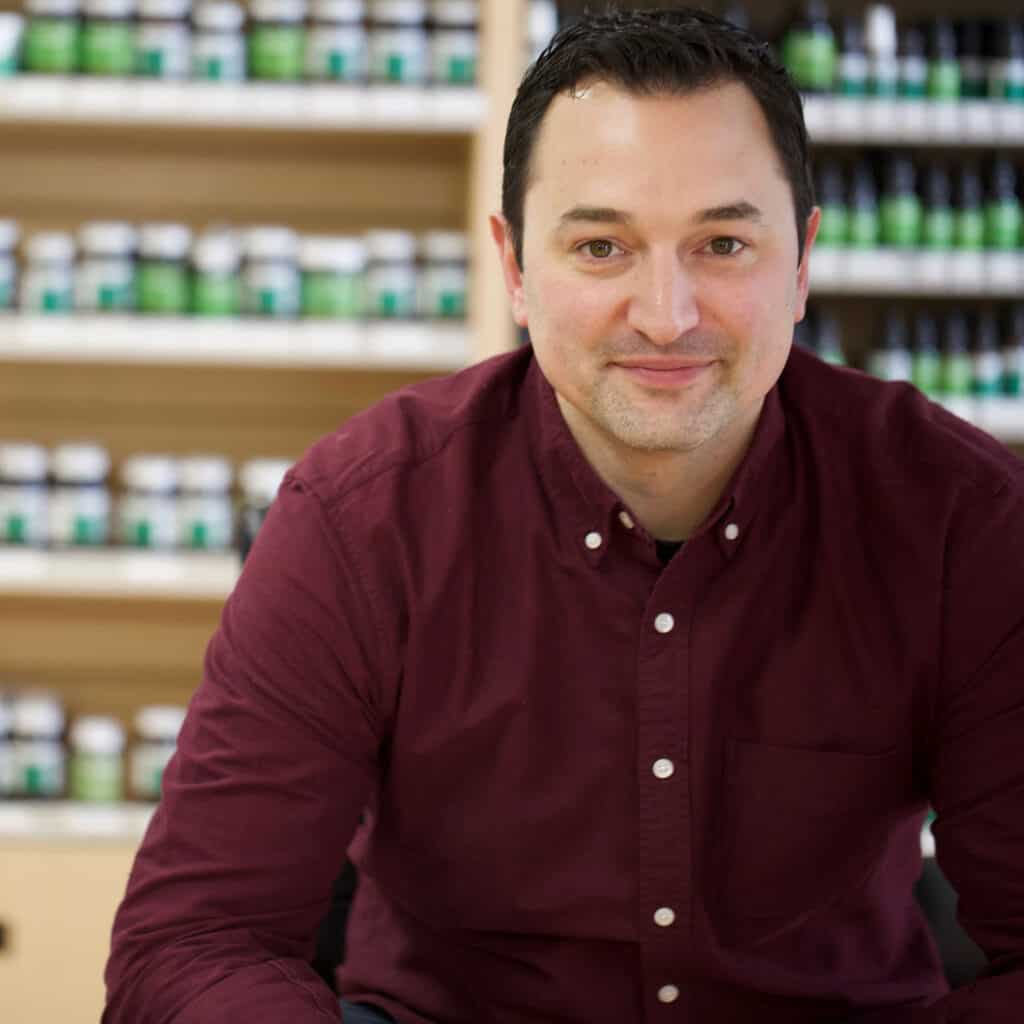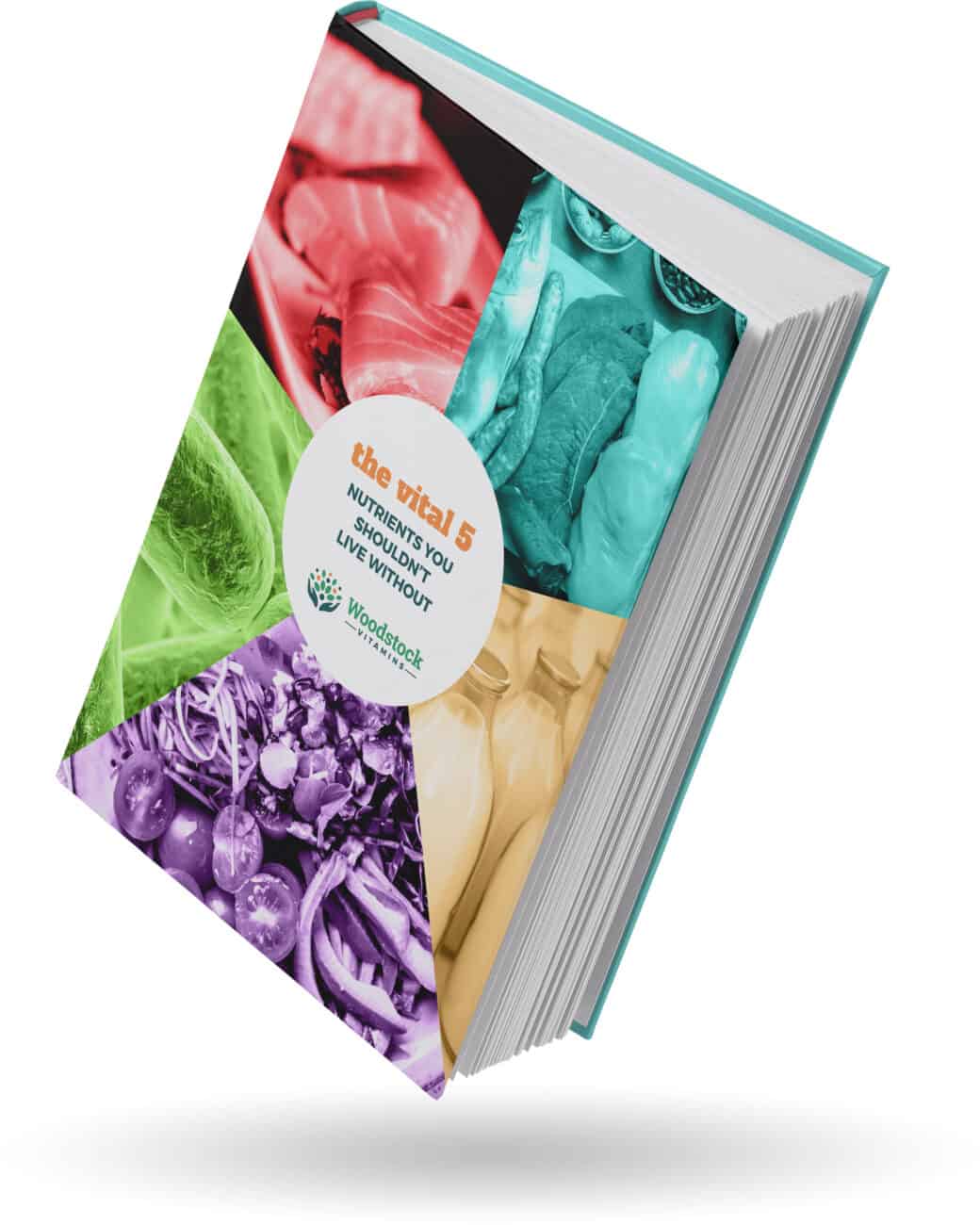There’s ample proof that the wellness experience you pay for is not the one you intended to receive.
Look through a few of our rants for more than enough evidence to make you go “Hmmmm…”
The cause of the gap between what you want and what you get is mostly due to quality.
Product and information quality are poor.
Potency is a major concern – did they screw up and add too much or too little to the bottle this lot?
Maybe… Mostly though, poor quality results in contamination and adulteration.
Corner-cutting and profit-optimization results in you getting an added bonus… in the form of adulterants, potential carcinogens, heavy metals, and basically low-level poison.
Let me remind you that this is from a natural ‘wellness’ product with pictures of leaves and stuff on the bottle.
There’s so much that the ‘experts’ get wrong. Anyone can recommend a supplement. Most do it without proper training.
It seems to be a risk-free environment where “gurus” and “practitioners” can make all sorts of claims about what a supplement can do.
As consumers, we are in the dark. It’s super overwhelming. We don’t know what we don’t know. As a result, we ask the wrong questions. We ask, “What should I use?” or “How much does this cost?”
We bang the drum of quality and what to expect loudly. Today, we rant about two crucial supplement points charlatans and manufacturers alike gloss right over.
These two considerations will complete the picture of what “best-in-class” really looks like.
The Smartest Customers
You guys are smart. Seriously, pat yourselves on the back. I’m not sucking up, I swear!
Our customers are savvy about their supplements, and they should be proud. There’s a growing number of people that smell there’s something fishy about supplements, but who know they can still be useful.
They aren’t like the people out there doing the buy-one-get-a-truckload free from the warehouse stores. They look beyond cost towards quality. If they’ve read our other blogs, rants, or watched some of our videos, they’ve heard enough evidence to know things aren’t what they seem in this industry.
But there are two points we’re missing that this rant will check the boxes on.
We often talk about how we offer “Best-in-Class” supplements. What is that, exactly? “Is that something you just made up?” Yes, it is, but that’s not bad.
“Best-in-class” takes into consideration all of the variables that need to be addressed because of the loosey-goosey regulations and enforcement in our industry.
There’s no single measure of quality. No rubber stamp. We here have to be that rubber stamp. We do so by thinking about everything “quality” – potency, purity, GMP, and new tricks in adulteration.
We also think about ethics, morality, and sustainability. Finally, a huge piece centers around the clinical evidence. What about a supplement makes it “work?”
How do I know the product I’m recommending isn’t the same as the mess out there? We have to ask two very important questions that many “experts” do not.
- Is the product bioavailable? Does it get absorbed and stay around long enough to work?
- What dose should the product be taken at, based on the best available evidence?
These questions are simple and obvious. But they are too often forgotten. As consumers, we make some assumptions about supplements based on our understanding of all other medicine (prescription and over-the-counter). We assume that if it says Gingko on the label, it means I’m getting the right dose of the right stuff.
But we aren’t getting what we expect from the natural products industry, so we must be more engaged with the process and demand more from brands and experts to close this gap.
Question 1: Will this even get into and stay in my body?
When a traditional medication is being formulated, they measure blood levels of the medicine at frequent intervals IN HUMANS (i.e. blood tests) over time and compare it with a population. Any slight change in the formulation (i.e. how the tablet or capsule is made), and the assumption is the blood levels will change.
This DEFINITELY does NOT happen in supplement land. We make assumptions that it will get absorbed. Any data on absorption is limited (small numbers of people studied over a short period of time). One brand makes a tablet one way, another brand makes a tablet another.
In general, this is fine, I guess. When we had our compounding pharmacy, we were formulating preparations for individuals. We’d create a standard formula, sure, just like in supplements. Just like in supplements, we didn’t test the absorbability but instead relied on effect or benefit to the patient.
Compounded prescriptions are one-off situations and the patient is being closely monitored. Are you being closely monitored for the effect of your supplement?
In all honesty, many people don’t know what effect to even look for, nor are they monitoring it closely. It’s a general “I feel better” most practitioners are looking for, but if the charlatan throws 8 supplements at you at once, how do we know what did what?
This is a bigger point beyond absorption:
Bioavailability. Bioavailability is the percentage of a dose taken is actually absorbed and available for the target tissues and sites of action in the body.
Yes, something can get absorbed, but what happens to it? Does it go directly to the liver, get destroyed, then discarded by the body? Or does it get utilized and hang around? Does it hang around way too long and potentially cause some toxicity?
There are many factors that dictate the rate and extent of absorption of a compound. This isn’t a pharmacy school class, so I’ll save this for another day. Instead, I’m going to give you a few examples of common products that have these bioavailability issues, yet seemingly no one discusses them.
Turmeric
We covered this extensively in a recent rant, but turmeric is a classic example of a supplement that our bodies just flat out say “no” to. It’s barely absorbed from the gut, and what little that is absorbed is chewed up instantly by the liver.
A black pepper extract is often added to help with the bioavailability problem. It does so, however, by creating drug interactions: blocking liver enzymes to prevent the breakdown of turmeric may cause drugs or other supplements to get to toxic levels in the body.
We recommend BCM-95 as the proper, thorough turmeric extract. It’s found in our Curcumin Supreme and all turmeric-based products we carry. It has better bioavailability without needing the black pepper.
Minerals
Calcium, Magnesium, Iron, Zinc, and others make up the group called minerals.
Minerals don’t exist on their own. They must always be bound to some other compound. What a mineral is bound to will definitely determine the absorption levels.
Our favorite example is magnesium. Magnesium oxide and magnesium citrate are everywhere. Magnesium oxide is the active ingredient in Milk of Magnesium, which is used if you are constipated.
Magnesium citrate is the clear bottle that will blow out your colon if the first magnesium didn’t work.
These products are formulated to ensure your GI tract gets LOTS of magnesium, and this induces diarrhea. Explosive even.
If we are trying to get magnesium to our muscles, for example, why would we use products that are formulated to keep mag OUT of the blood and in the gut?
Most traditional practitioners are the culprits of bad advice here. Common mineral forms such as calcium carbonate (aka “Oyster Shell” or “Algae calcium”) or magnesium oxide are ubiquitous.
It’s easy to send a patient anywhere and know that they’ll find those products. Plus, they’re cheap. The issue is these cheap, ubiquitous forms are also some of the worse for you.
Calcium carbonate and citrate have been demonstrated to deposit into soft tissues (aka the heart). If that weren’t enough, those forms don’t even help bone density.
Very recently I had a discussion with a doc about magnesium for migraines. He was pretty set on recommending magnesium oxide, because “that was what was studied.”
While I appreciate his strict reading of the literature (we can’t make assumptions – an alternate product may not have the same effect), this is one where some correlations definitely could be made.
But here you are, a patient whose doc says “take mag oxide” and a silly pharmacist disagreeing. Since I am also a professional, I yield to the doctor. Does your expert even loop in the doctor?
Chelated minerals are best. These are usually minerals bound to amino acids and have superior absorption compared to other minerals.
The final point of discussion around this is the dose. Mag oxide is 400mg where our Easy Magnesium is 125mg. People will balk and say, “that’s not enough.” They know, at least in this example, the importance of DOSING in supplements and medicine – a point I will rant against shortly.
Here’s an analogy. Imagine your gut is a construction crew. There’s a set number of workers and shovels. You can drive a BIG truck with a tiny payload of dirt.
You can have a tiny truck with a BIG payload. You can drive a big truck with a big payload. All the different scenarios. No matter what, though, you only have so many workers.
They can only move so much dirt. And by the way, it’s raining, so the dirt is getting washed away. We want the most efficient package: the right amount to be moved into the blood without overworking or saturating the absorption pathways.
This brings up our next point – Vitamin C.
Vitamin C
So many people reach for Vitamin C. Cough and cold season is coming, when the Petri dishes – I mean kids – go to school and start sharing all their germs and bringing them home.
Everyone will want Vitamin C in 500 or 1000 mg doses, multiple times a day, to “boost the immune system.” We’ve discussed this before, but let’s focus on the absorption part of this.
Our body can only absorb 100-200 mg of Vitamin C at a time. The rest stays in your gut and goes out in your feces. Just right there, you’ve gotten ripped off by 40 to 80%. No matter what, there’s a limited number of construction crew that can move Vitamin C into the blood.
Let’s say you bypass the construction crew and inject the Vitamin C directly into a blood vessel. You’re so smart. The problem is our body is made to maintain a much-lower-than-megadosing level of Vitamin C.
Think of it like an A/C thermostat set to turn on at 80 in the Florida summer. Our Vitamin C thermostat kicks on as easily and clears out the excess quickly.
Bottom line: Vitamin C isn’t absorbed and is cleared quickly if we get even the slightest bit more than what we need. That should inform your decision on how much Vitamin C you really need.
Vitamin D
Vitamin D3 has some amazing traits. It’s absorbed VERY easily. It’s cleared slowly from the body, which is great as long as you don’t overdo it. Because of this, it can be dosed once weekly instead of daily, giving a sustained effect over time.
Vitamin D2, a different form of Vitamin D, doesn’t have this ability and needs to be given at minimum every other day.
But you take your Vitamin D every day, which we recommend to prevent accidental overdose (keep it below 10,000 units daily… or 7,000 units to be safe). Sometimes it’s about the dosage form – tablet, capsule, softgel – not just the chemical form.
Some studies have shown poor absorption of Vitamin D3 if it isn’t kept in its oil form and is instead turned into a powder.
This is one of the big reasons we don’t include it in our Calcium Care product. Vitamin D needs vary from person to person, sure, but the biggie is that the form may impair absorption.
Vitamin D should always be in the D3 form- look for liquids or softgels for best absorption. Avoid tablets or capsules of Vitamin D3.
Answer 1: This is complicated!
“How in the H-E-double-hockey-sticks am I supposed to know all these things?” you exclaim. You aren’t. You are supposed to have a trusted expert who tells you these things.
Do you think the guy at the health foods store knows this stuff? The uncredentialed practitioner who hasn’t studied anatomy, physiology, or pharmacokinetics?
What you now know is that the absorbability is something you have to consider. There are MANY more examples we could have given, so this isn’t unique to just these products!
Question 2: Am I getting the right dose of the right thing?
Let’s say you have a headache. If you take Tylenol, 500mg helps you with your headache. What if you come to me and I sell you a product that contains only 2mg of Tylenol per dose? How would you feel about me as a person?
“But you’re getting Tylenol!” I shout from under my desk as you throw Band-Aids and whatever other boxes you can get your hands on.
This is the absolute NONSENSE that happens WAY too often in the supplement industry. You’re handed a bottle that says “Echinacea” on the front, but inside there’s only a teensy amount – nowhere near what has been shown to help.
And trust me, the data on many supplements isn’t that great. So if there is a study that shows a certain effect, let’s make sure we are getting that same dose.
Fairy Dusting
In our Garden of Lies article, we discuss how one major brand labels their products as whole food, when in fact it is just synthetic vitamins combined with small amounts of food powder blends. The magical supplement fairy sprinkles in supplement dust and you get the full effect. Right!
Here’s a snapshot of that proprietary blend:
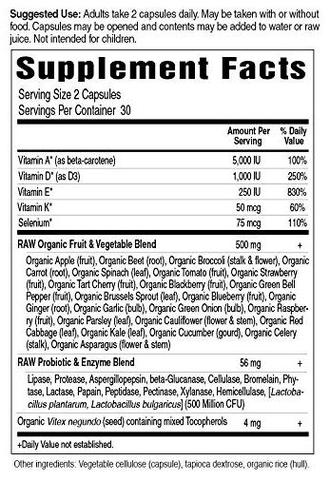
Here’s what I teach my customers about proprietary blends:
- Count the number of things in the blend. In this example, there are 23! Ingredients in the “Raw” fruit & veggie blend.
- Divide the total weight of the blend by the number of things in it. In this example, 500 mg / 23 is 22 mg per ingredient. (Note this is a generous average: the ingredients are listed by weight, so it is possible you are getting less than the average of any one of these ingredients)
- Divide the weight per item by the serving size. In this example (not shown), it is 2 capsules. So the weight of 500 mg fruit & veggie blend is actually the amount of the powder in 2 capsules!
- This product has, on average, 11 mg of each of those ingredients in the blend.
This final number means you are getting 11 mg of apples, carrots, etc etc. If a paperclip is cut into 1000 pieces, that means you are getting about 11 of those pieces of each of those ingredients. You can rub that amount of powder on your gum and not even detect sweetness or flavor. See why dose is such a rant worthy concept?
CBD
This is my favorite right now. CBD is a HUGE trend. While, yes, there is promise of CBD as a medical agent, I still believe this trend has more to do with a regulatory shift (rules changing around industrial hemp) and a glut of extra raw material than it does with a new discovery.
CBD products are flooding the market. There’s so much trash to sift through, and the presentation of CBD is a bit weird compared to other supplements, so it is easy to get deceived.
Here’s an example:
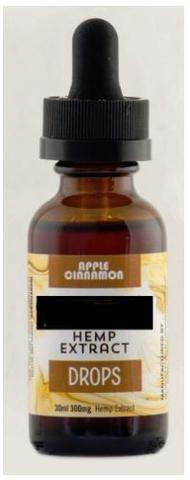
The back of the label didn’t have any more info that helps their case, so I excluded it.
First thing’s first: hemp oil is just what holds the CBD. Much like fish oil has EPA and DHA Hemp oil on its own is worthless. Not REALLY worthless, but the big effect comes from concentrates of CBD. Some brands are labeling the amount of hemp oil and hiding the amount of CBD, just like the above example.
This brand claims they have 300mg of CBD in this product, but it does not clearly state that on the label. Instead, it says Hemp Extract. If they are being honest, then great, but follow the regulations and label your product right. Other products list hemp extract, not CBD, as well, and don’t have any CBD at all.
Here’s what a CBD product should clearly show:
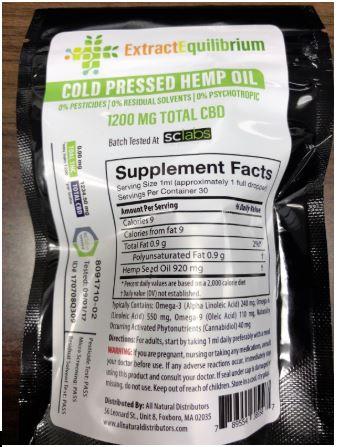
This clearly shows that you are getting 1200mg CBD in this bottle. Yes, it lists Hemp Oil at 920mg, but that’s not the active ingredient.
Most people need about 20-40mg of CBD for the “easy” stuff: anxiety support or sleep support. For pain management or complicated conditions like epilepsy, data shows you could need HUNDREDS of milligrams a day.
So an expert can easily talk about CBD and its benefits, but if we are not connecting the dose required and what the product delivers, they are ripping off consumers.
It doesn’t matter to them. All that matters is they sell you a product for $40-50. Even the price is strategically considered: it denotes “premium” to many people but it is still accessible for a “miracle” product they’ve “heard so much about.”
Wouldn’t it make more sense to spend your efforts making a quality product, rather than deceiving people? It seems more like “cash in on the trend quick, get ready for the next wave.”
Don’t be fooled. Compare apples to apples by doing this basic formula:
Cost of the whole bottle/mg of CBD in the bottle
This gives you the cost per mg of CBD. If all things are equal (this is a botanical, so pesticides, herbicides, and heavy metals must be considered), this is an easy way to compare brands.
Almost all quality brands are in the range of 10 cents per mg for the small bottles to 7 cents per mg for the big supplies.
Fish Oil
Let’s skip the anchovies and talk about snake oil. Snake oil wasn’t ineffective. It contained decent doses of EPA and DHA and other important fats that people needed.
Snake oil was gaining in popularity, so a wave of “snake oil salesman” flooded the market with diluted snake oil, charging the same price. Sound familiar? That trick was so effective, the supplement industry was built upon it.
Most people take fish oil products that contain less than 300mg of EPA and DHA. The target daily dose – based on almost all data – is greater than 3000 mg. Ten times the amount.
If your $20 fish oil was dosed correctly, it would be $200. You are getting ripped off. Our Alaskan Omega a smarter choice.
Krill oil? Fuhgeddaboudit! Krill oil is a 50-80mg per dose EPA and DHA product. It has no magical attributes, except starving out whales since we’re using their food for crappy supplements.
Practically Any Herbal Blend
There are so many herbal blends, or combinations of herbs, that are labeled for specific health concerns. They have 50 ingredients because this is ‘Murica and more is better!
The point I often make to people is that it would be physically impossible to cram enough of all those ingredients to actually do anything into a single pill without it looking like a tube of chapstick.
Here’s an example:
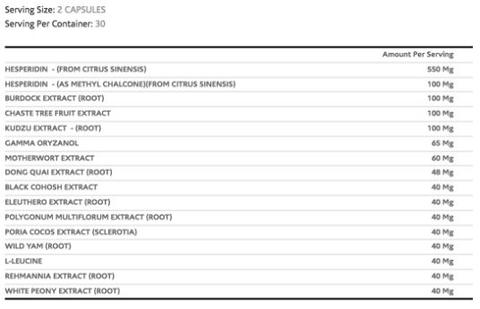
Considering the dose of just the black cohosh alone should be upwards of 200 mg a day to yield the proper amounts of triterpenes, what are we accomplishing with this product? Deception.
Botanical medicine is complicated. What’s the difference between a turmeric plant and a turmeric supplement? Well, there are supplements that are just turmeric plant chopped up, mixed up, and put in a capsule. These are referred to as “whole herb.”
There are other herb supplements that extract out and concentrate what is believed to be the active compounds found in the herb. This is called an extract. The extracts can be concentrated to different levels.
Extracting the “actives” out of a single plant and taking that dose is a lot different than extracting from hundreds of plants and concentrating that down to yield a high dose.
You have to trust that the product that you are getting is being honest. That it was formulated intelligently to accomplish a goal, not to be different for marketing purposes. Unfortunately, you also have to be more knowledgeable of all of these silly tricks.
Here are some questions to ask when using an herbal blend.
- What are the active compounds?
- How much of each of those is enough?
- What is it that we are actually measuring? The whole herb? The extract? What is the extract of? Which active components?
- Why can’t anyone just be honest in this industry?
Answer 2: Dose matters over all.
Let’s pretend for a moment we don’t care about quality (We do! I can’t even pretend for a moment).
If you aren’t taking the right dose of ANYTHING, you are wasting your time. Compare two products: the grossest, dirtiest thing on the market that is dosed correctly, or the squeaky clean, industry product that delivers 1/50th of what you need.
I’m not condoning nasty supplements, but you can see how the problem of choosing the best supplement is multi-dimensional.
Dose matters more than anything, so I’d want someone who was on a gross product to find a comparable clean one ASAP, but they are on a better track than the person getting severely underdosed.
We Don’t Ask The Right Questions
Let me be clear, as this is a rant and normally is much more venomous than I have laid out here. This is absolutely insane that consumers must be so vigilant around supplements.
I am a lifelong advocate of empowering people to take more ownership of their health and wellness, but the depth of knowledge a consumer must have to successfully call BS on products and experts is just outlandish.
It can be done, though. It should be done. You are fully capable of hitting the highlights without becoming an expert yourself.
You are climbing the Wellness Pyramid and you’re doing it all right: making your lifestyle changes, taking the Vital 5. Now you want to try a supplement to see if it will address a health concern.
Great – do it! Do it with the understanding that absorption and dose matters as much, if not more, than the quality of the product.
When getting recommendations, don’t get half the answer. Keep pushing until you get all the answers you need.
We want you to expect more out of your wellness experience. The more you know about what is real, the easier it will be for you to navigate the road ahead.
Just trying to keep it real…

Neal Smoller, PharmD
Owner, Pharmacist, Big Mouth


